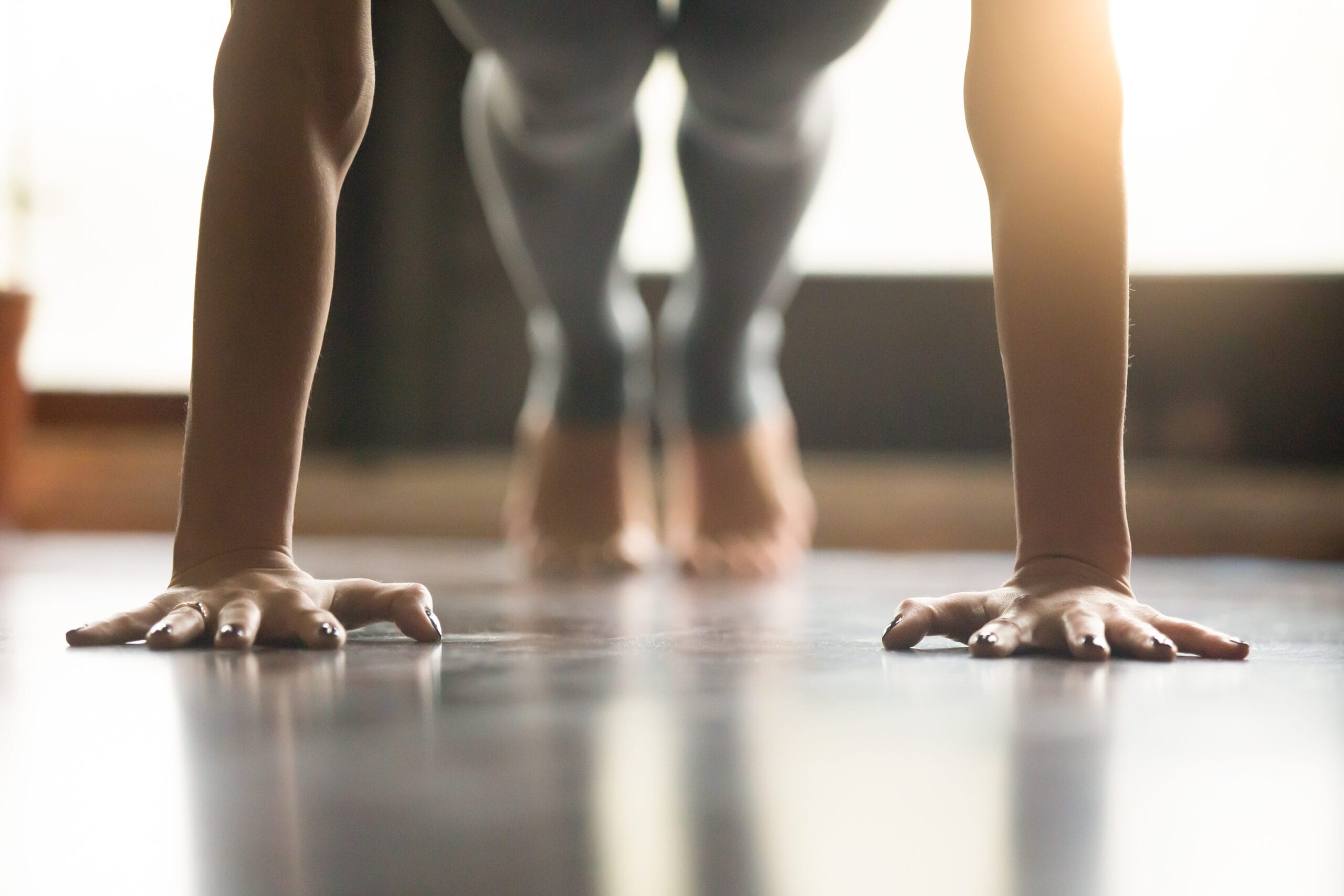
Hamstring tightness is a common muscle imbalance and unfortunately, it can lead to a lot of unwanted problems.
From back and knee pain during exercise to poor posture and difficulties with everyday activities, tight hamstrings can be a real pain in the you know where.
Luckily, there are a lot of ways to stretch these guys and improve their flexibility.
And dynamic stretching is a great way to do this prior to exercise.
Dynamic stretching helps increase blood flow and improve mobility, reducing the chance of injury while participating in whatever activity you’re about to perform.
And unlike classic static stretching, they don’t inhibit performance or take forever to complete.
In this article, we’ll explore the importance of dynamic hamstring stretches and the benefits they can bring to your fitness routine.
We’ll also take a look at some highly-effective examples you can start adding to your warm-up today.
Let’s get started.
Understanding the Hamstrings
Before diving right into dynamic stretches, it’s essential to understand the hamstrings’ role in the body.
The hamstrings are a group of three muscles located on the back of the thigh (the biceps femoris, semitendinosus, and semimembranosus) and they play a big role in pretty much any movement occurring from the waist down.
Their primary role is to bend the knee and extend the hip, but your hamstrings also help stabilize the knee and pelvis during activity.
And since they do connect to the pelvis (ischial tuberosity, right under your butt) having tight hamstrings can put unwanted stress on the low back.
Tight hamstrings can easily cause pain in the knees or hips during activity and even contribute to foot and ankle issues during walking/running.
This is because tight hamstrings can effect your knee range of motion, altering your foot placement when it strikes the ground.

I know, wild.
As a physical therapist, we have to take into account a lot of different variables when trying to diagnosis/treat pain.
This keeps the job exciting, but it can also make it challenging.
Anyway, the hamstrings are versatile muscles that play a multifaceted role in movement and function.
Proper conditioning, including stretching and strengthening exercises, is important to maintain the health and functionality of the hamstrings and to reduce the risk of injuries.
The Importance of Dynamic Stretches
Dynamic stretches involve controlled, active movements that mimic the actions of the activity or sport you’re about to engage in.
Unlike static stretches, dynamic hamstring stretches help increase blood flow, warm up muscles, and improve flexibility without compromising strength.
This is particularly beneficial before engaging in activities that require explosive movements or rapid changes in direction.
Dynamic hamstring stretches usually get most of the other muscles in your legs moving and warm too, making them a great choice for leg day or for use before any cardio workout.
Dynamic stretches in general, are best used before a workout, so consider including them as part of your warm up routine.
Static stretches on the other hand, are usually best suited for the cool down phase, helping you improve muscle tension after your workout is finished.
These rules aren’t written in stone anywhere, but there has been some research that shows too much static stretching before exercise can inhibit strength.
5 Highly-Effective Dynamic Hamstring Stretches
#1 Leg Swings
Stand next to a wall or chair for support and swing one leg forward and backward, then side to side. Repeat for 10-15 swings on each leg.
Try to remain standing nice and tall and try not to bend your trunk.
And don’t try to kick beyond your capabilities or you might risk pulling something… make sure you’ve warmed up before doing this one.
#2 Walking Lunges
Take a step forward with your right foot into a lunge position, keeping the left leg straight. Alternate legs as you walk forward, feeling the stretch in the hamstrings.
This definitely gets your quads and glutes warmed up too, making it a great choice for leg day.
I also like it because you can feel a good stretch in your hip flexors as well.
When lunging, take note of your knee position – try to make sure it doesn’t go forward past your knees, as this can put more stress through your knees.
You can also play with how far you lunge down – the lower you go, the harder it is.
Aim for 10 – 15 lunges per leg for a nice dynamic warm up.
#3 High Knees
Lift your knees toward your chest while jogging in place. Focus on lifting each knee as high as comfortably possible.
This is basically just marching in place on fast forward and it’s a great way to get a little stretch in the hammy’s while getting the heart rate up.
Counting for this one might get tough, so aim for 30 – 60 seconds.
#4 Inchworms
Start in a standing position, bend at the waist, and walk your hands forward until you’re in a plank position.
Walk your feet toward your hands, feeling the stretch in your hamstrings and repeat.
You can choose between walking your hands back to your feet, returning to the starting position, or keeping your hands where they are and walking your feet back to your hands.
This exercise stretches the hamstrings effectively, but it also works to strengthen your core and shoulders at the same time.
Great exercise.
Not gonna lie, if you’re really tight this one is going to be tough, so this one might be better suited for the folks who are more flexible.
Still a great dynamic stretch though.
#5 Walking Straight Leg Kicks
While standing, elevate both arms straight over head.
Kick one leg straight in front of you, while bringing the opposite hand down like you’re trying to touch that toe and then switch to the other leg.
Keep a slight bend in the supporting leg and continue stepping and kicking, while alternating legs.
Repeat for 10-15 reps for each leg.
This one is similar to the leg swing mentioned earlier, but it really emphasizes the hamstring stretch with each step.
Benefits of Dynamic Hamstring Stretches
And just in case you aren’t completely convinced dynamic stretches are the way to go for a great warm up, here are a few more reasons to consider adding them to you routine:
- Improved Flexibility: Dynamic stretches target the full range of motion, enhancing flexibility and reducing muscle tightness.
- Injury Prevention: By warming up the muscles and joints, dynamic stretches help prevent injuries during physical activities.
- Enhanced Performance: Increased flexibility and warmed-up muscles contribute to improved athletic performance.
- Better Blood Circulation: Dynamic stretches promote blood flow, delivering oxygen and nutrients to the muscles.
Final Thoughts
Ok, there ya have it.
Maintaining flexible hamstrings is a key part of improving range of motion in the gym and preventing injuries in the real world.
And this is more important than ever these days, when so many of us spend so much time sitting in front of a screen.
Stretching your hamstrings is also a key part of unlocking your hips, something that can help improve mobility with a lot of different exercises and activities.
There are a lot of different ways to stretch your hamstrings, but when it comes to warming them up before a workout, dynamic stretching is the way to go.
Not only does these exercises get your hamstrings and joints moving, but they’ll also help get your heart rate up and get that blood pumping.
That reminds me, I don’t think I mentioned it earlier, but it’s always a good idea to warm up a little before diving into these stretches.
Walking, jogging, cycling, or doing some other light cardio warm up is a good idea before starting these dynamic moves.
Having warm muscles just prevents muscle pulls and strains even more.
And remember to listen to your body, start with gentle movements, and gradually increase intensity as your flexibility improves.
If you have any questions, comments, or know of any other great dynamic hamstring stretches, please leave a comment below and I’ll get right back to ya.


